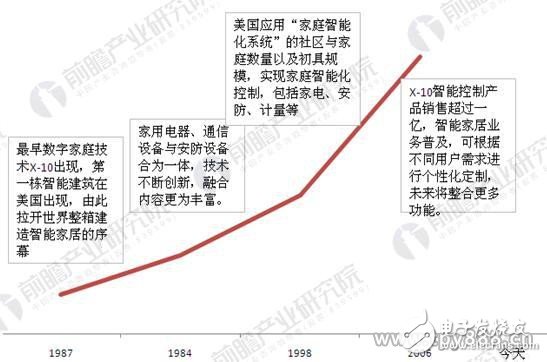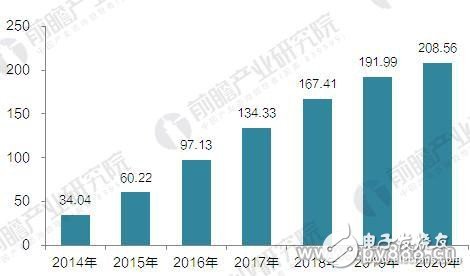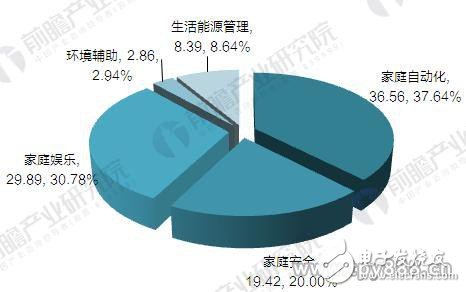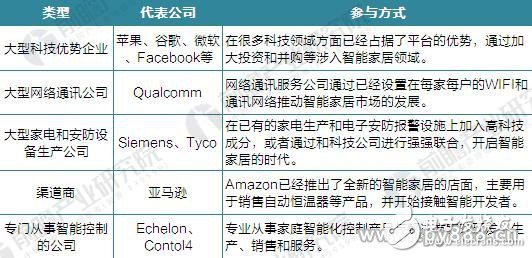In 2017, it is a year of artificial intelligence. All brands are promoting their own smart products, and the competition is fierce. Intelligent voice involves smart TV, intelligent audio; AI technology involves intelligent robots, unmanned vehicles; AR, VR involves virtual reality, real-world applications, all push artificial intelligence to the top. Of course, there are more and more artificial intelligence products, and it is inevitable that the home products such as TV, audio, etc. will be updated and iterated during this period. With the big data and the Internet, the smart home mode will gradually enter people's daily life.
The United States has a deep relationship with smart homes. Since the world’s first intelligent building appeared in the United States in 1984, the United States, Canada, Europe, Australia, and Southeast Asia have developed various smart home solutions, smart homes. It has been widely used in the United States, Germany, Singapore, Japan and other countries.
Because the living environment in the United States is dominated by villas and single-family houses, the development of smart homes is more focused on the communication network and the control of home entertainment. At the same time, the continuous innovation and promotion of smart home technology has led to a decline in the unit price of smart homes, effectively promoting the promotion of smart home devices.
Overall, the US smart home industry has experienced four stages and has now entered a stage of rapid development. The rapid development stage is mainly based on X-10 intelligent control products. The smart home business is popular and can be customized.
Chart 1: The development of the US smart home market

The United States is the largest market for global residential automation systems and equipment. At present, its smart home industry has developed more maturely, and the market has begun to take shape and the industrial chain is complete. According to the "2018-2023 China Smart Home Equipment Industry Market Prospects and Investment Strategy Planning Report" released by Forward Industry Research Institute, the United States, as the world's largest and most popular country in the smart home market, has been in the smart home for the last three years. The market capacity is growing, from $3.404 billion in 2014 to $6.022 billion in 2015 to $9.712 billion in 2016, an average annual increase of nearly $3 billion. In the future, with the global outbreak of the smart home industry, family penetration will gradually deepen. It is estimated that in 2020, the market capacity of smart homes in the United States will exceed 20 billion US dollars.
Figure 2: Size and Forecast of the US Smart Home Market in 2014-2016 (Unit: US$100 million)

From the perspective of the market scale of smart home segmentation in the United States, its smart home products mainly focus on home automation, home security, and home entertainment. For example, in the US market, the penetration rate of household central air conditioners has exceeded 70%, and 85% of households are equipped with central temperature regulators for heating equipment, and 60% of households are equipped with central temperature regulators for refrigeration equipment, represented by intelligent thermostats. Smart energy-saving products are favored.
In the 2016 US smart home segment, home automation was $3.656 billion, accounting for 37.64%; home security was $1.942 billion, accounting for 20.0%; home entertainment was $2.989 billion, accounting for 30.78%; It is 286 million US dollars, accounting for 2.95%; living energy management is 839 million US dollars, accounting for 8.64%.
Figure 3: Market size and proportion of the US smart home segment in 2016 (unit: billion US dollars, %)

In recent years, many giants in the United States are optimistic about the development prospects of the smart home industry, and have entered the smart home industry: In January 2014, Google acquired Nest for $3.2 billion, setting off a smart home boom; after that, AT&T, the largest wireless communication service provider in the United States (NYSE: T) and US cable giant Comcast Corp, both announced their entry into home security and automation.
In June 2015, Apple released the first HomeKit smart home products that can control lighting, room temperature, fans and other appliances through the iPhone, iPad or iPod Touch.
On January 4, 2016, Facebook CEO Mark Zuckerberg announced that he will challenge artificial intelligence technology in 2016 to develop artificial intelligence technology that can control the home environment.
The game of American technology giants in the smart home field has proved the potential of this market. Compared with China's domestic smart home market, which emphasizes lighting control and other functions, the United States has a relatively mature family security market due to its relatively mature family security market. Therefore, the main force of promotion is mainly home security enterprises, in addition to Control4 and Elan. The representative manufacturers highlight the home entertainment system.
Chart 4: US Smart Home Participants Competition

Engine Parts Bolt And Woodruff Key
Cummins Spring Nut,Cummins Hexagon Head Cap Screw,Cummins Genuine Replacement Parts,Cummins Expansion Plug
Chongqing LDJM Engine Parts Center , http://www.ckcummins.com